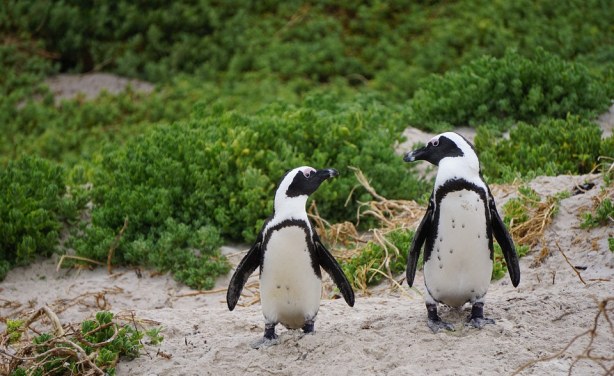-
Africa: Artificial Nests Can Help African Penguins Breed - but Parasites Like Them Too
The Conversation Africa, 3 December 2020
The African penguin (Spheniscus demersus) population has declined by over 95% since the 1900s and by nearly 65% over the past 30 years. Read more »
-
South Africa: African Penguins Are Heading Towards Extinction - Here's How We Can Save Them
Daily Maverick, 1 December 2020
The science is clear: the African penguin is likely to be functionally extinct on the west coast in less than 15 years, unless we take immediate action. Read more »
-
South Africa: Whales, Dolphins and Penguins Among 75 Marine Species Killed By Ships - Report
News24Wire, 22 May 2020
At least 75 different marine species - ranging from whales to dolphins, sharks, sea otters, seals, penguins and sea turtles - have been recorded as being killed through collisions… Read more »
New Nests are Helping African Penguins Breed
The African penguin population has declined by over 95% since the 1900s and by nearly 65% over the past 30 years. In the early 1900s, there were an estimated 1.5 million to 3 million African penguins inhabiting islands off the coast of southern Africa. By 2019, this had fallen to about 17,900 breeding pairs or 35,800 breeding individuals. One of the reasons behind this dramatic decline is habitat destruction. Guano, which African penguins use to build burrows, lay eggs and raise their chicks, was harvested at an industrial scale to be used as fertiliser. Consequently, penguins were forced to build open surface nests, which are more exposed to the weather and to predators such as kelp gulls. One way of protecting penguins has been to put artificial nests in colonies. In recent years, the conservation authority has raised concern about ectoparasites on penguins and their nests, and the health of chicks at some colonies. Ectoparasites can be bad for the birds' condition and transmit disease, writes Marcela Espinaze for The Conservation Africa.
InFocus
-
The research team collected 30,171 dive records from 74 penguins, and used a technique called hydro-acoustic survey to measure sounds in water as the penguins chased their favoured ... Read more »
-
Environmentalists are commending Seychelles' strong conservation practices which have resulted in the ranking with a score of 77 out of 100. Globally, the island nation ranked 33rd ... Read more »
-
The oceans and its critters have been among the foundations of human societies. Approximately three billion people around the world depend on marine and coastal biodiversity for ... Read more »
-
More than 500 people are gathering in Maputo this week to attend an international oceans conference hosted by the Mozambican government. The event aims to explore opportunities to ... Read more »





